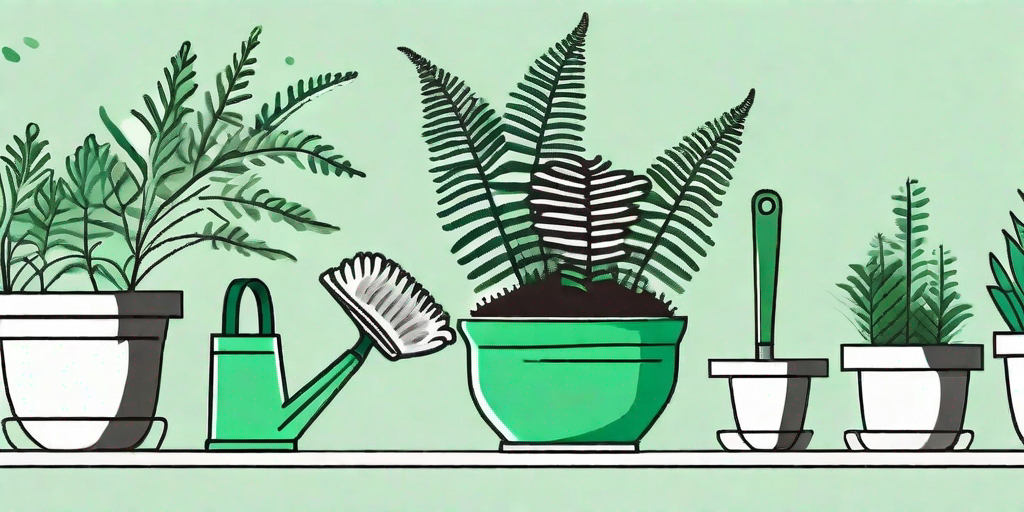
Welcome, green-thumbed enthusiasts and fern-fanatics alike! Today, we're diving into the verdant world of leafy greens and their transplantation. Whether you're a seasoned horticulturist or a budding botanist, this guide will provide you with all the knowledge you need to ensure your leafy friends thrive in their new homes. So, without further ado, let's get our hands dirty (literally) and dig into this!
The Art of Transplanting: Why, When, and How?
Why Transplant?
Firstly, let's address the root of the matter - why transplant at all? Well, transplanting can be a vital step in a plant's life cycle. It can provide them with more space to grow, better soil conditions, and improved access to sunlight. Essentially, it's like moving from a cramped city apartment to a spacious country house - who wouldn't want that?
Moreover, transplanting can also help in propagating your plants. If you've got a particularly beautiful fern that you'd like to see more of around your garden, transplanting is your ticket to a greener paradise.
When to Transplant?
Timing, as they say, is everything. This holds true even in the world of plant transplantation. The best time to transplant your leafy greens is during their dormant period, which is usually in late fall or early spring. This is when the plants are least likely to experience transplant shock, a common plant ailment that can occur if plants are moved at the wrong time.
However, if you're dealing with indoor plants or those in controlled environments, you can transplant them any time of the year. Just make sure they're healthy and not under any stress (yes, plants get stressed too!).
How to Transplant?
Now, let's get to the juicy part - the actual transplantation. This process can be broken down into three main steps: preparation, transplantation, and aftercare. Fear not, we'll be delving into each of these steps in the following sections. So, keep your trowels at the ready!
Transplantation: A Step-by-Step Guide
Step 1: Preparation
Like any major life event, transplantation requires some preparation. Start by choosing the right location for your plant. Consider factors like sunlight, soil type, and space. Remember, your plant's new home should be an upgrade, not a downgrade!
Next, prepare the new hole. It should be twice as wide and just as deep as the root ball of your plant. This gives the roots plenty of room to spread out and establish themselves in their new environment.
Step 2: Transplantation
Now, for the main event. Start by gently removing your plant from its current location. Be careful not to damage the roots - they're the lifeblood of your plant. Once you've successfully uprooted your plant, place it in the new hole. The top of the root ball should be level with the ground.
Fill in the hole with soil, firming it gently around the base of the plant. Remember, you're tucking your plant in for its new life, not suffocating it! So, be gentle.
Step 3: Aftercare
Transplantation can be a stressful process for plants. So, it's important to provide them with some TLC afterwards. Water your plant thoroughly, and continue to do so regularly. This helps the plant establish itself in its new home.
Also, keep an eye out for signs of transplant shock, such as wilting, yellowing, or leaf drop. If you notice any of these symptoms, don't panic! Just cut back on watering and give your plant some time to adjust.
FAQs
1. Can all plants be transplanted?
Most plants can be transplanted, but some are more sensitive than others. It's always best to research specific plants before attempting to transplant them.
2. How often should I water my transplanted plant?
This depends on the type of plant and its specific needs. However, as a general rule, it's best to keep the soil consistently moist for the first few weeks after transplantation.
3. What if my plant shows signs of transplant shock?
Don't worry, it's not the end of the world! Cut back on watering, ensure the plant is in a suitable location, and give it some time to recover. If the symptoms persist, consider consulting a local nursery or horticultural expert.
Wrap Up
And there you have it, folks! A comprehensive guide to transplanting your leafy greens. Remember, with a little patience and care, you can ensure your plants thrive in their new homes. So, go forth and transplant with confidence!
Happy gardening!















